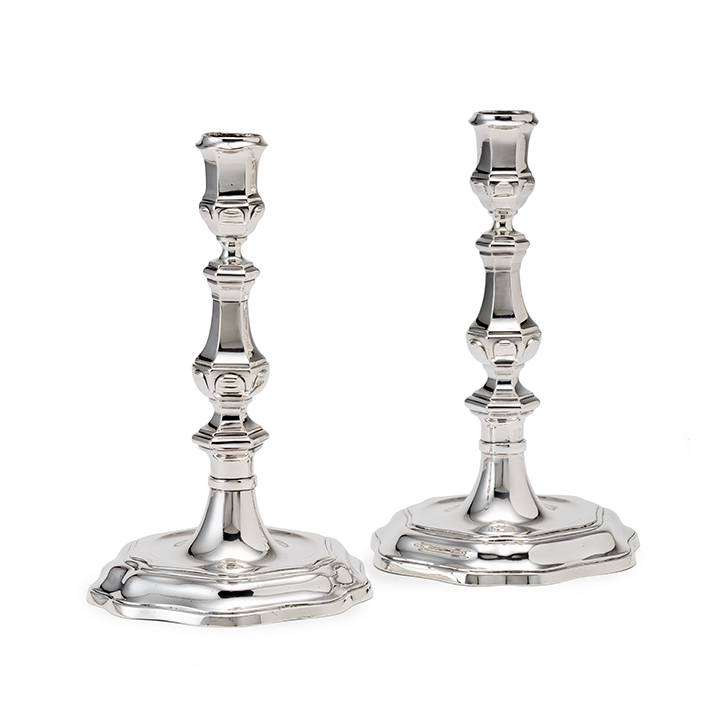
Pair of Dutch silver candlesticks
About This Project
Pair of Dutch silver candlesticks
Hermanus le Maitre
The Hague, 1752
918 grams in total; 21 cm high
The candlesticks stand on a wide scalloped base with profiled rims and a lowered central part, from which the faceted baluster-shaped stem with knob rises. The campana-shaped, faceted sconces are decorated on the underside with an applied lip ornament, as well as the underside of the stem, above the knob. Fully hallmarked on the reverse and displaying an assay stripe.
The silversmith
It is known that the Le Maitre family (Le Meteren, le Maistre) came from the town of Enghien in Hainaut around 1600. The family members were Protestant craftsmen who fled from the Walloon region to the northern Netherlands. In 1626 a child was baptized in the Walloon Reformed Church in The Hague.
Hermanus le Maitre was born in The Hague on 25 December 1718 as the son of Adrianus Hermanusz (1681-1738) and Johanna Catharina Warnier (1687-1730). His father, like his grandfather, was a Master ‘Cnoopmaker ‘In The Hague. On 3 March 1748 he married Bartha Jacoba Maasman. Bartha was a daughter of the Hague silversmith Caspar Diederick Maasman. The following year, in 1749, he was admitted to the silversmiths’ guild in The Hague. Hermanus died at the age of 77 on April 3, 1796, five years after the death of his wife. In 1771 both lived in Voorburg on Westeinde close to the Geestbrug. It seems that the surname Le Maitre was only definitively used by Hermanus instead of the surname Le Meteren (le Maistre).
Hermanus’ surviving silver oeuvre mainly consists of corpus work, such as candlesticks and salvers, but also inccludeds cutlery. His grandfather and his father worked as button makers for the stadtholder’s court and for noble families, among others. Hermanus was married to a daughter of the Hague silversmith Maasman. It is assumed that he was apprenticed to his father-in-law who had been working as a silversmith in The Hague since 1724. The work of Hermanus Le Maitre indicates this. His designs show a lot of similarities with the well-known work of Maasman. The design of the candlesticks is very similar to Maasman’s candlesticks. A tentative assumption may be that the cast bases and stems of the candlesticks may have come from the same casting molds. These candlesticks, made in 1752, are early work by Hermanus le Maitre. He used the model until well into the 60s of the 18th century.
For more information, click here



